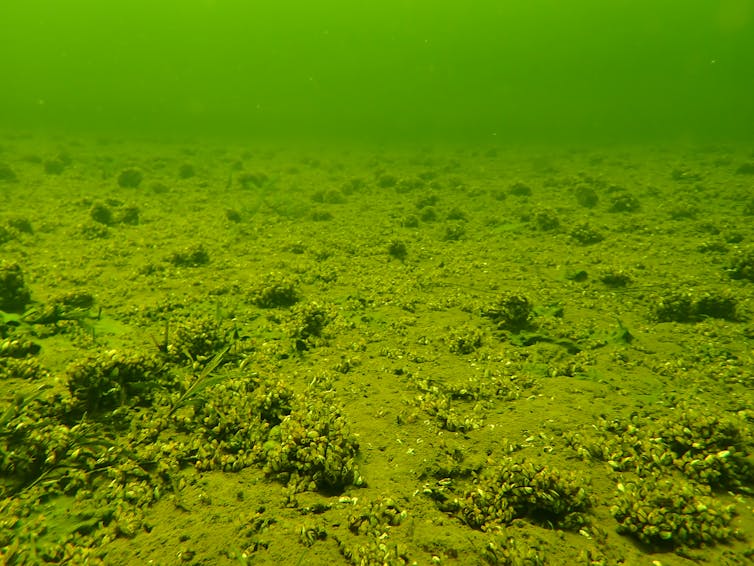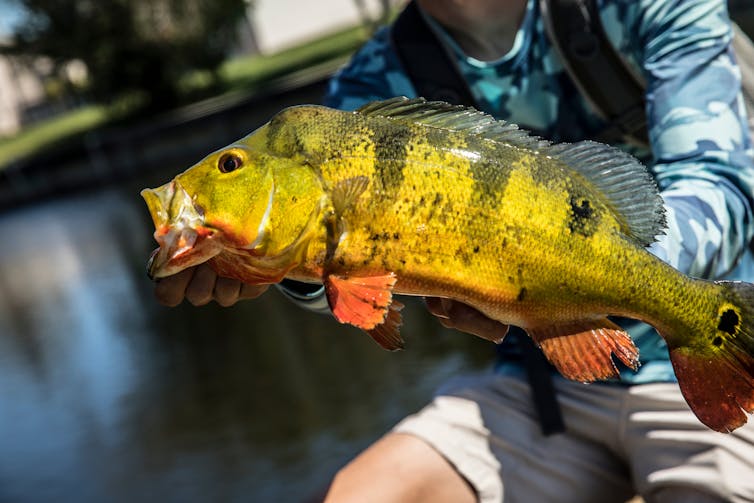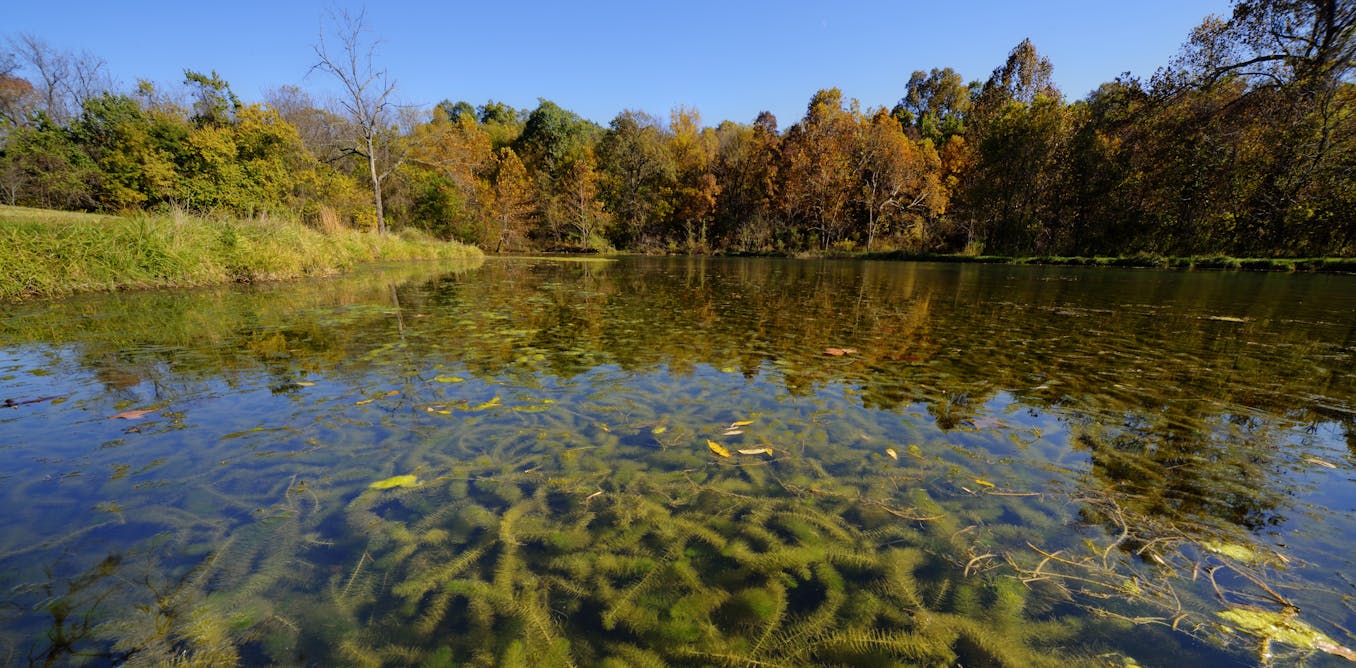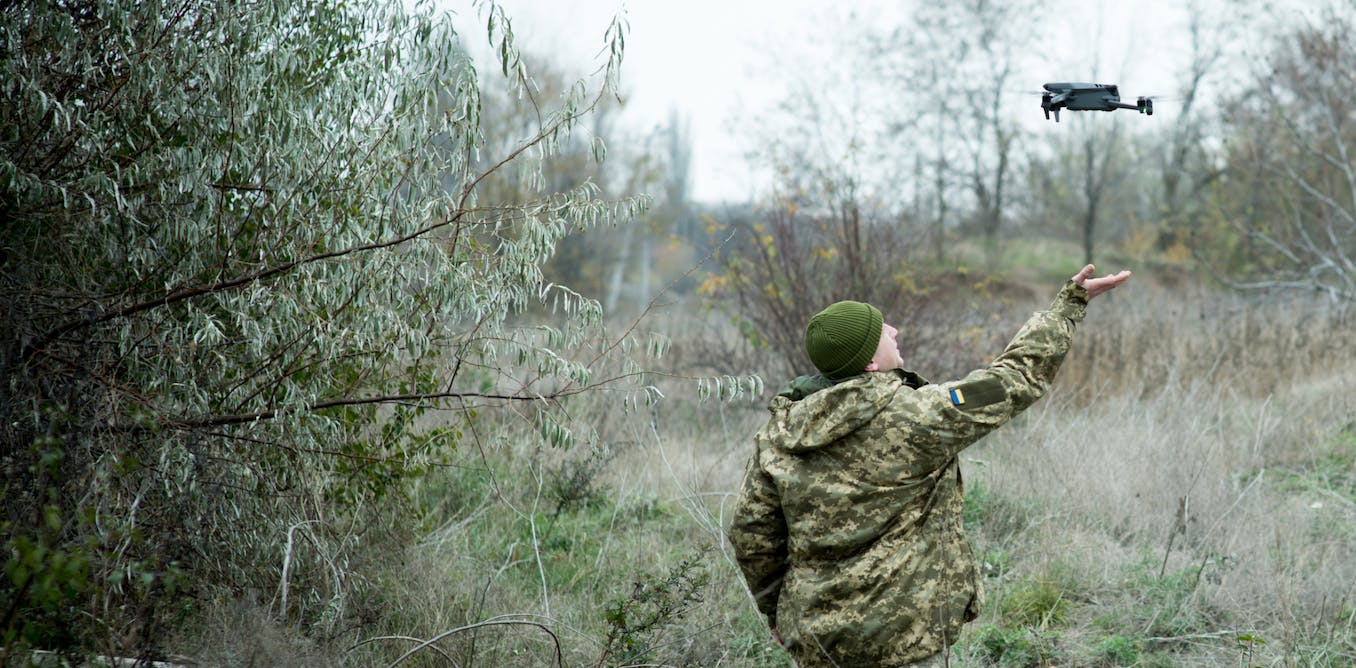Freshwater ecosystems in Canada and around the world are under siege.
Lakes, rivers, ponds and wetlands face many environmental threats, but one that is changing them most rapidly is the spread of invasive non-native species.
In recent years, there have been numerous outbreaks of invasive species in Canadian lakes. Zebra mussels continue to spread in Québec and Manitoba. Chinese mystery snails are increasingly found in lakes in eastern Canada. Eurasian watermilfoil has spread to the maritime provinces. Meanwhile, goldfish have become superabundant in small lakes and ponds throughout the country.
Far from being isolated cases, these outbreaks are symptoms of a form of global change.
This article is part of our series Our lakes: their secrets and challenges. This summer, The Conversation and La Conversation invite you to take a fascinating dip in our lakes. With magnifying glasses, microscopes and diving goggles, our scientists scrutinize the biodiversity of our lakes and the processes that unfold in them, and tell us about the challenges they face. Don’t miss our articles on these incredibly rich bodies of water!
Rising invasion rates
Throughout the history of life, plants and animals have slowly dispersed through natural means to different areas of the world. However, with human assistance, species are now spreading beyond their historical ranges faster, farther and in greater numbers than ever before. They are invading ecosystems at unprecedented rates.
Freshwater ecosystems are highly prone to invasion and susceptible to human disturbances. Most non-native species are introduced through human activities or infrastructure. For example, ballast water release from cargo ships delivered more than half of all non-native species known in the Great Lakes.
The spread of species into lakes is also facilitated by canals, fish stocking, bait bucket dumping, recreational boating and pet release. Invasive aquatic plants are often snagged on the propellers and trailers of recreational boats moved between lakes; the plants themselves may carry attached zebra mussels, which can live out of water for several days during overland transport on boat trailers.

(Brielle Comartin), Author provided (no reuse)
The release of aquarium pets is another driver of invasion. One study estimated that more than 10,000 fish purchased from Montréal pet stores are released into lakes and rivers annually.
Consequently, rates of invasion for freshwater ecosystems are among the highest of any habitat type and continue to increase.
Highly vulnerable ecosystems
Lakes, rivers and wetlands make up about one per cent of the Earth’s surface area but hold nearly 10 per cent of all living species, including more than half of all known fish species. This diversity is being eroded faster than that of terrestrial and coastal marine ecosystems, in part because of the impacts of invasion.
Although it can be challenging to disentangle the impacts of invasion from other human stressors, in various freshwater ecosystems the primary driver of declines of freshwater fishes has been revealed to be invasive species rather than habitat alteration.
Read more:
Our lakes are teeming with parasites. Why that’s good…and bad
One reason that lakes are more sensitive to invasive species is because they contain life that lack adequate defences to a broad range of invaders. For example, non-native trout that have been stocked in historically fish-less lakes in western North America have caused declines in native frogs that have evolved without pressure to adapt to large aquatic predators.
Similarly, zebra mussels overgrow and smother the shells of native freshwater mussels, which have no evolutionary experience with such fouling organisms. Many native mussel populations in the lower Great Lakes-St. Lawrence River system and other invaded waterbodies have been decimated by the zebra mussel.
Cascading consequences
Aquatic invasive species threaten fisheries, water quality, local economies and human health. These impacts can extend well beyond the invaded lake. When the predatory peacock bass invaded Lake Gatun (Panama) in the late 1960s, it wiped out small insect-eating fishes that played an important role in suppressing mosquito larvae. Consequently, the adult mosquito population around the lake exploded, which increased the risk of malaria to humans in the area.
The unauthorized introduction of lake trout in Yellowstone Lake in the United States in the 1990s fundamentally altered the lake’s food web. These introduced trout caused the decline of a native fish that was a key food source for grizzly bear, forcing the bears to shift their diet toward land mammals (juvenile elk), putting these species in turn under increasing pressure.

(Shutterstock)
The European spiny waterflea, a predator that feeds on smaller zooplankton, invaded the Great Lakes through ballast water release in the 1980s and spread to inland lakes like Lake Mendota, where it attained enormous densities. Its voracious feeding caused a massive decline in native algae-eating waterfleas. The absence of these herbivores allowed phytoplankton to bloom and degrade water quality, thereby harming the aesthetic and recreational value of Lake Mendota.
In the lower Great Lakes, the filtration activities of invasive zebra and quagga mussels caused drastic increases in water clarity, which promoted excessive growth of algae on the lake bottom. When this mass of algae decomposed at the end of summer, it reduced the oxygen concentration in the bottom of the lake creating the perfect conditions for the proliferation of botulism. The bacteria accumulated in the mussels, which allowed their toxin to be transferred to mussel predators including an invasive fish called the round goby. Thousands of fish-eating birds died after consuming toxic gobies.
These cases demonstrate the extensive impacts that invasive species can have on lakes and surrounding ecosystems.
Stemming lake invasions
The Kunming-Montréal global biodiversity framework recognized “inland waters” as a distinct realm deserving conservation targets. Target 6 of the framework calls for rates of invasion to be reduced by 50 per cent by 2030.
Meeting this target will require new policies to control poorly regulated vectors such as those linked to the pet trade. An emerging threat from the pet trade is the marbled crayfish, which can generate a new population from just one asexually reproducing individual. A wild population of the crayfish was discovered in Ontario ponds last year.
Read more:
Rafts of garbage, kelp and other debris could transport alien invaders to a warming Antarctica
A significant reduction in invasion rates would lower risks of ecosystem disruption and biodiversity loss. For lakes, this can be achieved in part through responsible decisions regarding the disposal of live bait and aquarium pets, inspections of boats and fishing gear for hitchhiking organisms, and reporting newly detected non-native species.
Stakeholder education is also essential. The same citizens whose livelihoods and well-being are affected by lake invasions can play an unwitting role in spreading invasive species.
Engagement involving the public, scientists, industry and government can help reach the Kunming-Montréal target. Fortunately, the Great Lakes offers an encouraging case study as an ecosystem whose invasion rate has been reduced as a result of stakeholders working together to develop and enforce an effective regulation to control ballast water invasions.




